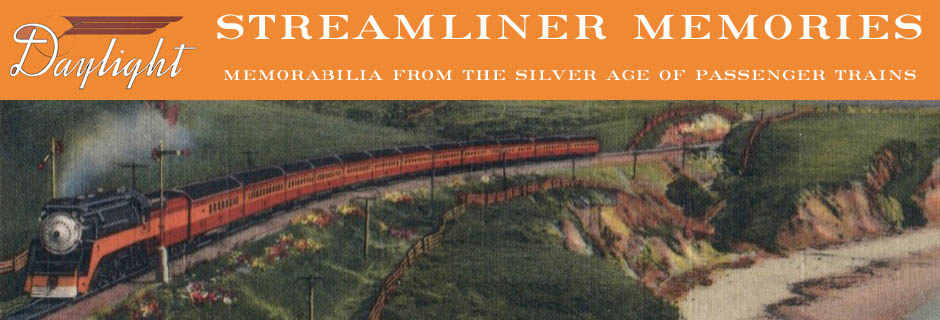Paintings recently sold by Soulis Auctions reveal that GM proposed several different ideas for painting the E6 used for Illinois Central’s City of Miami, which began operating as an all-coach train in December 1940. In retrospect, I don’t think they … Continue reading
Tag Archives: Miscellany
I’ve shown several paintings by GM Art & Color artist Paul A. Meyer. Here are three more. Click image for a larger view. Click here to download a 5.8-MB PDF with all three paintings in high-resolution format. The size of … Continue reading
The past few weeks have presented art by Leland Knickerbocker, Paul Meyer, Ben Dedek, and Harry Bockewitz, plus one data card whose painting was by Rex A. Prunty. Among images of original artworks provided by Greg Palumbo are three other … Continue reading
GM introduced the F9 in 1953 and the E9 in 1954. Both saw a power boost over their predecessors, the F9 from 1,500 to 1,750 horsepower and the E9 from 2,250 to 2,500 horsepower. Three F9s were about equal to … Continue reading
GM sold 496 E8 locomotives, all but 46 of them being A units. This was down only slightly from the 511 E7s sold. I only have eight data cards for E8s, possibly because GM stopped making such cards. The signature … Continue reading
The E8 locomotive succeeded the E7 in late 1949. Though the “E” in E locomotives represented eighteen, for the 1,800 horsepower of the E1 and E2, the E3 through E7 produced 2,000 horsepower and the E8 upped this to 2,250. … Continue reading
GM made more than 3,800 F7s, which was more than twice the number of F3s and in fact more than all other Fs combined. Yet Greg Palumbo has images of just eight data cards for F7s, plus a couple more … Continue reading
According to Wikipedia, GM began producing F7s in February 1949. The F3 and F7 were both rated at 1,500 horsepower, and while Wikipedia says the F7 had 20 percent higher tractive effort than the F3, that doesn’t show up on … Continue reading
In the years it was in production, GM made several incremental improvements to the F3. By August 1948, those improvements were significant enough that the company internally called locomotives built after that time F5s. However, in public they were still … Continue reading
By 1949, railroads had bought so many F3s that Trains magazine editor David P. Morgan suggested that railroaders then were “the age of the F3.” He didn’t know that the F7, which would be introduced in 1949, would greatly outsell … Continue reading
